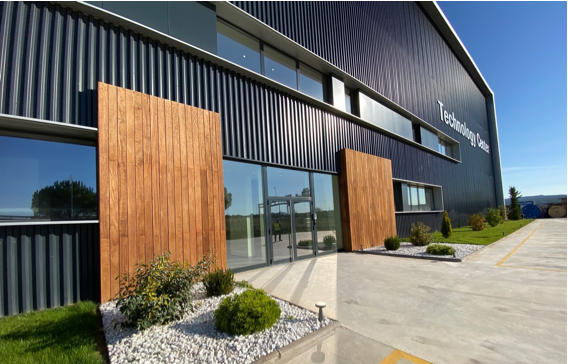Top Cable carries out numerous tests to ensure the quality of their cables Medium Voltage…
Cable testing: flame test, UV test, water resistance test
To ensure that our manufactured cables meet the highest standards of safety, reliability and durability, we conduct a series of rigorous cable testing in our Top Cable laboratories to evaluate cable performance in a variety of environmental conditions.

FLAME TEST: ENSURING CABLE FIRE SAFETY
The flame test plays a pivotal role in assessing the fire safety of cables, safeguarding lives and property in the event of electrical fires.
This cable testing evaluate the cable’s ability to resist ignition and propagation of flames. This information is critical in selecting cables suitable for hazardous environments, such as industrial facilities, public buildings, and transportation systems, where fire safety is paramount.


The flame test holds significant importance in ensuring compliance with international regulations and standards. Adherence to the European Construction Products Regulation, for instance, is mandatory for cables installed within the European Union. Other international compliance standards, such as NFPA, RETIE, SEC, and many more, incorporate the flame test as a crucial criterion for cable safety certification.
UV TEST: PROTECTION FROM SUNLIGHT
UV test assesses the cable’s resistance to ultraviolet (UV) radiation emitted by the sun, a crucial factor in ensuring its long-term performance and safety. The sun’s powerful UV rays have the potential to degrade cable materials, causing them to become brittle and prone to cracking. This deterioration compromises the cable’s functionality and creates potential hazards, including electrical failure, short circuits, and even fires.
Cables that successfully pass this rigorous cable testing demonstrate their ability to withstand the harsh effects of sunlight, ensuring their longevity and reliability in demanding outdoor environments.

WATER-RESISTANCE TEST: CABLES THAT WITHSTAND MOISTURE
Moisture can pose significant challenges to cable integrity, affecting their electrical properties, insulation, and overall performance. The water-resistance test is designed to evaluate a cable’s ability to withstand exposure to moisture and its potential impact on its electrical characteristics. This rigorous cable testing ensures that cables can endure various moisture scenarios, making them suitable for diverse applications.
During the water-resistance test, cables are subjected to controlled moisture environments, including direct immersion in water. The test is conducted under various conditions, such as different temperatures, humidity levels, and water types, to simulate real-world scenarios. Cables are thoroughly examined for any signs of damage, corrosion, or insulation breakdown that could compromise their performance or safety.
Cables that pass the water-resistance test are certified as moisture-resistant, making them ideal for outdoor installations, underground applications, marine environments, and other areas with high humidity or potential water exposure. Our XTREM® H07RN-F rubber cable can be installed permanently submerged (AD8), being the apropiate cable for submersible pumps in deep water installations.

Cables can be classified into 8 water-resistant cable types, according to UNE 20460-3:1996 standard: read this post here.
BEND TEST: MEASURING CABLE FLEXIBILITY
Bending test stands as a crucial evaluation that assesses a cable’s ability to endure the rigors of repeated bending without succumbing to damage or failure. This test holds particular significance for cables destined for applications involving frequent flexing, such as industrial machinery, robotics, etc. Cables subjected to the bend test must demonstrate their resilience against the challenges of repeated bending, ensuring their reliability and safety in these demanding environments.
During the bend test, cables undergo a series of precisely controlled bending cycles at varying angles and radii. The specific parameters for these cycles are dictated by the relevant cable testing standards, which set forth stringent guidelines to ensure the accuracy and consistency of the evaluation. Cables are subjected to repetitive bending at pre-determined angles, ranging from a few degrees to a full 180-degree bend, with the process often repeated in multiple directions to simulate real-world scenarios. The number of bending cycles can vary depending on the application, with some tests involving hundreds or even thousands of repetitions.
By successfully navigating these rigorous bend tests, cables demonstrate their exceptional flexibility and durability, meeting the demands of dynamic applications where constant movement and flexing are commonplace.
The more flexible the cable, the easier it will be to install, the better it will optimise time and reduce the cost of the work.

CABLE TESTING ACCORDING TO STANDARDS AT TOP CABLE’S LABORATORIES
En Top Cable, nuestro compromiso con la excelencia garantiza que todos los cables que diseñamos y fabricamos cumplen las normas de calidad más exigentes.
Our state-of-the-art laboratories are equipped with cutting-edge equipment and technology, ensuring that we can perform a comprehensive range of electrical cable testing to meet our clients’ specific requirements.
Our team of highly skilled and experienced engineers and technicians undergoes rigorous training to maintain their expertise and stay abreast of the latest industry standards, ensuring the highest quality and performance of your cables.
Contact us today here if you are looking for a cable manufacturer that delivers cables with exceptional electric performance.




